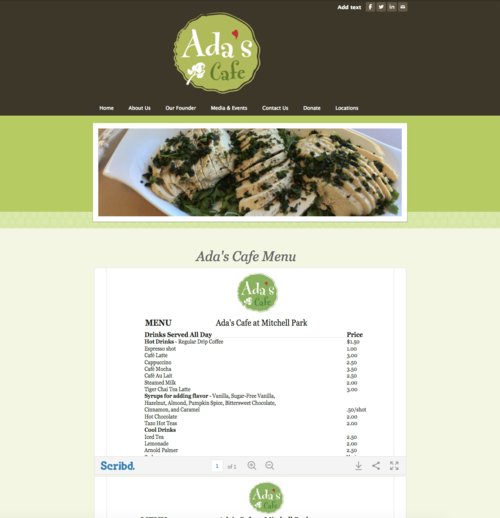| Old Website | New Website |
Like other types of organizations, non-profits also benefit from well designed websites. Building a good website helps non-profits create an online entity, interact with various stakeholders, start campaigns, and ask for donations.
Unfortunately, many organizations end up with websites which are difficult to navigate, don't provide the right information, and as a result lose out on engaging with their customers, donors or stakeholders. For non-profits which depend on donations and need visibility to grow, a bad website can have lasting effects.
At Ada's, our website showcased our mission, cafe, menu, catering service, and ways to donate. However, there were some obvious shortcomings which led to poor engagement with our website and high drop off rates.
With the aim to identify existing issues on the website and ideate on new features, we invited users to spend an hour with us to share their feedback and suggestions. We conducted one on one interviews and usability tests which helped us redesign the website. We asked interviewees questions focused on their interpretation of the content and their take away of Ada’s as a brand. We also had them perform tasks to reveal the website’s degree of usability.
The first usability tests indicated that we needed to revise and shorten our content. The main mission got lost between long paragraphs and disjointed snippets of information.
Through the research we were able to identify what users wanted on the website (Call to Actions like Donate, Visit and Catering), what they disliked (Clunky slideshows, old school feel to the text and pictures) and also how they navigated the website.
With the above insights we redesigned the website and followed it up with another round of research sessions, this time incorporating the the Rapid Iterative Testing and Evaluation method (RITE.). Championed by Michael Medlock, Dennis Wixon, Bill Fulton, Mark Terrano and Ramon Romero, this method advocates for rapid changes to a product prototype as soon as a problem and solution are clear.
Using the RITE method we made several iterations before creating the version which is currently live. Our final version took into account more specific feedback like replacing certain images and editing content.
Additionally, users reported that the new website had a pleasant design, was easy to use, provided them relevant information (putting in a catering order, checking prices on the menu), and helped them understand the valuable and impactful work being done by Ada’s.






